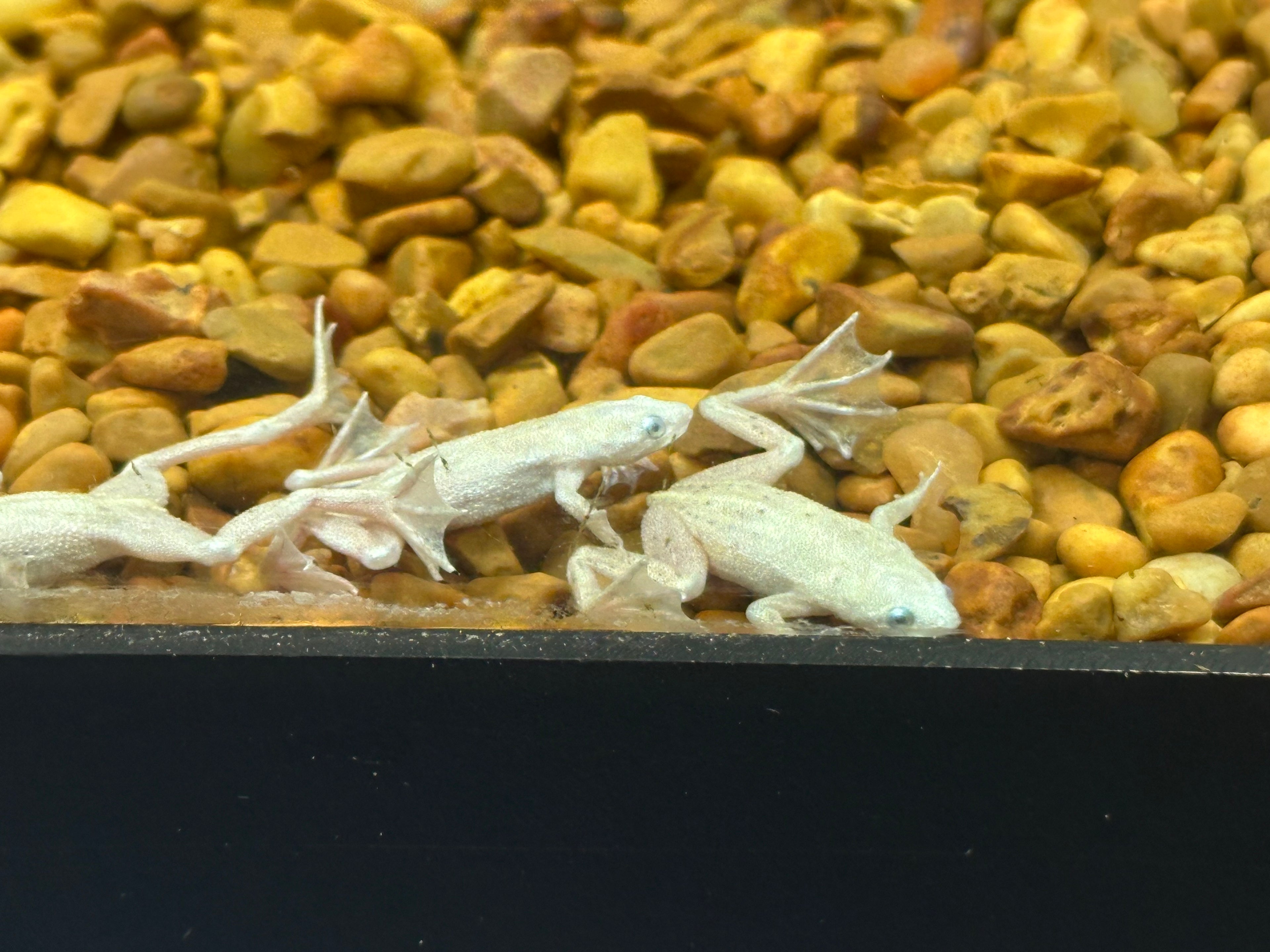Platinum African Dwarf Frog (1”)
- Regular price
-
$10.00 - Regular price
-
- Sale price
-
$10.00
Scientific Name
Hymenochirus boettgeri (Platinum morph of the Dwarf African Frog).
Maximum Size and Lifespan
-
Size: Typically reaches 1.5–2 inches (3.8–5 cm) in length.
-
Lifespan: With proper care, they can live 5–8 years, sometimes longer in ideal conditions.
Recommended Aquarium Size, Water Changes, and Care
-
Tank Size: A minimum of 5 gallons for a small group of 3–4 frogs is recommended. Larger tanks provide more stability and space.
-
Water Parameters:
-
Temperature: 72–78°F (22–26°C)
-
pH: 6.5–7.8
-
Soft to moderately hard water
-
-
Filtration: Gentle filtration is needed—these frogs are poor swimmers and dislike strong currents. Sponge filters work well.
-
Water Changes: About 20–30% weekly to maintain good water quality. Ensure dechlorinated water and stable parameters, as frogs are sensitive to toxins.
-
General Care: Keep the tank covered, as they may jump. Provide smooth substrate (sand or rounded gravel) and plenty of hiding spots (plants, caves, driftwood). Avoid sharp decorations that may damage their delicate skin.
Tankmates
-
Suitable Tankmates: Small, peaceful fish such as neon tetras, guppies, rasboras, and peaceful bottom dwellers like corydoras. Snails can also coexist,
-
Avoid: Aggressive, nippy, or fast-eating fish (like barbs or cichlids). Large or predatory fish will view frogs as prey.
Diet
-
Type: Carnivorous.
-
Foods: Frozen or live bloodworms, brine shrimp, tubifex worms, blackworms, and specially formulated frog or carnivore sinking pellets.
-
Feeding Notes: Frogs often struggle to compete with fast fish for food. Spot-feeding with tweezers or a feeding dish helps ensure they eat properly. Feed every other day in small portions.
Overview
Platinum Dwarf African Frogs are a selectively bred color morph of the popular Dwarf African Frog (Hymenochirus boettgeri). Their pale, platinum-white coloration makes them stand out in aquariums, and they remain small, active, and peaceful. They are fully aquatic amphibians—unlike African Clawed Frogs (Xenopus laevis), they never leave the water, surfacing only to breathe air. With proper care, they are hardy, entertaining, and well-suited to community aquariums with compatible tankmates.
Natural Environment
In the wild, Hymenochirus boettgeri inhabits slow-moving rivers, streams, and shallow ponds across Central Africa, particularly in the Congo Basin. They prefer warm, calm, heavily vegetated waters with plenty of hiding spaces. The Platinum variety does not occur naturally—it is a captive-bred morph.
Breeding
-
Sexing: Males are usually smaller and have a gland (white bump) behind their front legs, while females are rounder when mature.
-
Courtship: Males produce a quiet humming sound during mating attempts. They embrace the female in amplexus (a type of clasp) until she releases eggs.
-
Eggs: The female scatters eggs at the water’s surface. They are not parental and may eat the eggs if not separated.
-
Raising Fry: Eggs hatch in 2–3 days. The Tadpoles need extremely small live foods (infusoria, microworms, or freshly hatched baby brine shrimp) to survive. Successful breeding in captivity requires a species-only setup and careful attention to water quality.
Couldn't load pickup availability
-
Hurry, only 7 items left in stock!
Share



Platinum African Dwarf Frog (1”)
- Regular price
-
$10.00 - Regular price
-
- Sale price
-
$10.00
What We Promise
-
Quality Without Compromise.
Our #1 priority is our customers, and our fish.
-
All the Stock, All the Time.
We update our online store daily with new items as they become available.
-
Seamless Shipping.
No matter how big or small your order is, we will make scheduling the arrival of your items a breeze.



